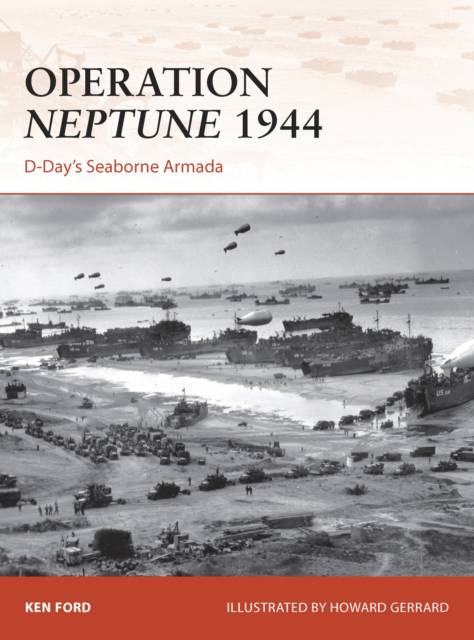
- Afhalen na 1 uur in een winkel met voorraad
- Gratis thuislevering in België vanaf € 30
- Ruim aanbod met 7 miljoen producten
- Afhalen na 1 uur in een winkel met voorraad
- Gratis thuislevering in België vanaf € 30
- Ruim aanbod met 7 miljoen producten
Omschrijving
June 6th, 1944: the largest fleet in history landed Eisenhower's Allied army on the beaches of Normandy against Erwin Rommel's Nazi German defenses. Almost seventy years on from D Day, the story of the greatest armada seen in world history is still not widely known. It has been celebrated in only two major books, both titled Operation Neptune; the first was published just after the war in 1946, the second in 1974, although reprinted in a new edition in 2008. Both were full of details, but lacked visual appeal. With the forthcoming anniversary of D Day in 2014, the time is right for the story to be told again in the style of the Campaign series.
Operation Neptune was the greatest naval operation ever undertaken, especially if looked at from the number of ships employed in the venture - over 7,000. This incredible enterprise is now completely overshadowed by the lan combat aspects of the invasion. When people think of D Day, they think primarily of troops storming the beaches and fighting their way inland. How these troops got to the beaches; how the seaward flanks of German defences were bombarded by accurate gunfire; how the fighting men were reinforced; how their casualties were evacuated back to England and how the later divisions were organised, transported and disembarked seems not to have been part of the public narrative of the invasion. It is now time that the work of planners, shipbuilders, logistic experts, and the men of the Royal and US Navies, and their allies, was shown to a modern audience.
The planners of Operation Neptune were charged with returning Allied forces in strength to mainland Europe. Whilst the land aspects of the operation were left to the generals, the admirals had to ponder how the troops and their equipment could be transferred safely from quiet harbours in Britain on to a very hostile shore. The task required of them was immense. They had to find enough suitable mutually supporting beaches and assemble sufficient shipping to transport troops across the Channel. They also had to organise protection for the ships on passage and the bombardment of enemy defences covering the landing places. Landing craft had to prepared and crews trained to deliver the troops on time, in place and in correct order, then to introduce follow-up troops to a tight timetable and evacuate the wounded. Even more ships had to be found to re-supply those troops ashore. Then, when the assault phase was over, the US and Royal navies had to continue to support the enlargement of the lodgement with large calibre guns whilst their engineers built new artificial harbours and performed a host of other unspecified objects too numerous to mention. Operation Neptune was absolutely immense in its scope.
The story of Operation Neptune was, of course, more than just a tale of planning, building and logistics. It had action a-plenty and the emotive tales of bravery, ingenuity and determination by the crews of the ships involved brought credit to the naval traditions of the Allied nations. Battleships, cruisers and destroyers bombarded enemy positions; midget submarines pointed the way to the beaches; minesweepers worked secretly by night to clear lanes; landing craft of all sizes braved enemy fire and mines to deposit their loads on the beaches and naval beach parties endured shellfire and machine guns to bring order to the beaches. Royal Navy commandos and US naval engineers dealt with beach obstacles against rising tides in the face of withering enemy fire.
Specificaties
Betrokkenen
- Auteur(s):
- Illustrator(s):
- Uitgeverij:
Inhoud
- Aantal bladzijden:
- 96
- Taal:
- Engels
- Reeks:
- Reeksnummer:
- nr. 268
Eigenschappen
- Productcode (EAN):
- 9781472802712
- Verschijningsdatum:
- 18/02/2014
- Uitvoering:
- Paperback
- Formaat:
- Trade paperback (VS)
- Afmetingen:
- 183 mm x 244 mm
- Gewicht:
- 294 g

Alleen bij Standaard Boekhandel
Beoordelingen
We publiceren alleen reviews die voldoen aan de voorwaarden voor reviews. Bekijk onze voorwaarden voor reviews.









